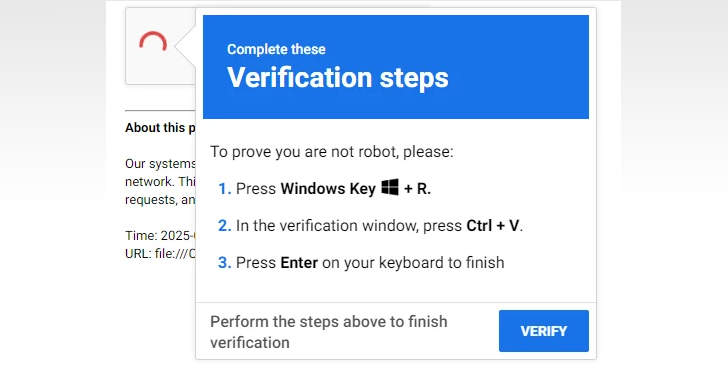This blog was written by an independent guest blogger.
The banking and financial sector is known for its dependence on third-party vendors that help provide customers with quality financial products and services. It is one of the most interconnected sectors, making it one of the most vulnerable to cyberattacks. And because third parties operate through the banks they are contracted with, any losses are the bank’s responsibility.
The interconnectivity and shared data of embedded finance enable banks to provide more effective solutions and better financial products. But because numerous systems and processes are intertwined across networks and organizations, there are many avenues for attackers to wreak havoc on banks and their customers.
There are several third-party services that are necessary for banks to operate efficiently, but there are many risks that come with the territory. What are the risks? And how can banks reduce the impact of vulnerabilities from third-party vendors? Let’s discuss some of the top risks associated with outsourced banking services and how banks can protect themselves.
Common third-party vendors
Relationships with third-party vendors are highly valuable for banks and financial institutions. Using third parties enables banks to offer their customers a wide variety of services to increase revenues, reduce overhead costs, and expand the institution’s ability to reach new customers. When third-party relationships are managed effectively, they can be an essential piece of a larger business strategy.
Here are some examples of services provided by third parties:
Mortgage lending
Credit cards
Overdraft protection
Auditors
Brokerage services
Auto dealer relationships
Flood insurance
But services are not the only place that banks use third parties. Companies often use software and other technologies like CRM, invoice generators, communications tools, and more.
And with new services being added all the time, banks also use third parties to educate workers and customers about new products and services. Third-party service providers allow banks to innovate and stay ahead of the curve, giving them an edge over the competition and improving customer experiences.
You might never have thought to deploy a crypto 101 module, but cryptocurrency banking is an up-and-coming service. One day we may all require a crypto account. Third-party vendors make shifting to new technologies and rolling out new service offerings simple for everyone involved. So what’s the problem with third-party vendors?
Risks of outsourcing to third-party vendors
Despite the benefits of working with third-party vendors, banks are up against numerous risks when they choose to outsource a service:
Regulatory risks
Privacy is a key issue involved with third-party vendors. Banks are required to maintain regulatory compliance to protect consumer data, or else they could face steep fines and penalties. If a bank experiences a data breach, it’s highly likely that they were not in compliance with data privacy regulations. Not only does this affect consumers, but it could have serious impacts for national security as well.
Reputation risks
Working with third-party vendors can sometimes mean putting a bank’s reputation on the line. Aligning with the wrong vendors can lead to inconsistencies that have a domino effect on an organization. If there is a negative public image of a third-party service provider due to a security breach, regulatory violations, or bad press, the bank could experience some pushback as well. When banks use poor judgment in choosing service partners, they run the risk of dissatisfied customers, unexpected financial losses, and even public backlash.
Operational risks
Unsecure or immature third-party vendors can also cause banks to suffer from operational risks. Many banks use third-party services that integrate with their own processes. Some implement third-party services to run a certain program or financial offering. Even the systems that control daily operations are built on third-party platforms. But if internal systems are affected by a third-party failure, operations could come to a halt.
Financial risks
There are also several financial risks associated with working with third-party vendors. Banks and vendors typically enter into legally binding contracts that detail performance expectations and financial obligations. But the financial condition of all vendors can immediately affect banking institutions. If the third party doesn’t adhere to the contract agreement, originates loans outside of approved limits, or lacks the ability to mitigate financial losses, the bank could end up paying.
How to reduce third-party risks in banking
Outsourcing financial programs and services can help banks improve customer experiences, reach new customers, and increase revenues. Still, the risks can leave organizations open to data breaches, financial losses, and operational failures. When banks enter relationships with third-party vendors, they absorb the consequences of failures, data breaches, and costs.
According to the Federal Deposit Insurance Corporation (FDIC), there are 5 steps that banks can take to reduce the risks of working with third-party vendors:
Conduct thorough risk assessments
Before entering an agreement with a third-party vendor, banks should conduct a thorough risk assessment to evaluate the potential of their alignment. A vendor risk assessment should include oversight for fourth-party applications and services, risk vs. reward analysis, and ensuring that the relationship aligns with the bank’s strategic business goals.
Perform adequate due diligence
In addition to a thorough risk assessment of potential third-party vendors, banks should also perform adequate due diligence. Gathering the correct information can help management address more specific details about vendors’ capabilities. Surprises about operational factors, business limitations, and financial obligations can create serious legal and regulatory problems.
Review contracts carefully
Once a decision has been made to move forward with a particular vendor, the bank must ensure that all documentation is carefully examined. Specific expectations should be lined out from the beginning for both parties before any services operate through a third party. Management, executives, and the board must all approve contracts before they are offered to vendors. Legal counsel is important at this stage to reduce any legal risks associated with the third party.
Ensure proper oversight
Banks can ensure proper oversight of third-party activities through specific workflows dedicated to the flow of approvals and reviews. The board should initiate the approval of the third parties’ activities and conduct regular reviews of these arrangements, especially when there is a change to the program. Banks can implement continuous monitoring activities through the company’s compliance systems to ensure that vendors are operating according to federal and state laws.
Implement robust cyber security processes
Finally, banks, third-party vendors, and fourth-party vendors should all perform regular reviews of network security processes. Companies must have end-to-end transparency across all vendor activities while at the same time protecting their perimeter from data loss. The key is that organizations have a plan to implement changes, patch management protocols, and vulnerability mitigation in addition to detection and response processes.
Final thoughts
Third-party service providers enable banks to offer various services to meet customer needs. But vendor management is complex and comes with several risks that can damage a bank’s reputation, credit, and ability to perform.
A reactive approach to changes in regulations, technology requirements, and vendor abilities leaves banks vulnerable to risks. But standardized methodology, vendor requirements, and ongoing oversight can help maintain positive vendor relationships. Plus, a proactive approach to third-party management can help reduce security risks and keep attackers at bay.





